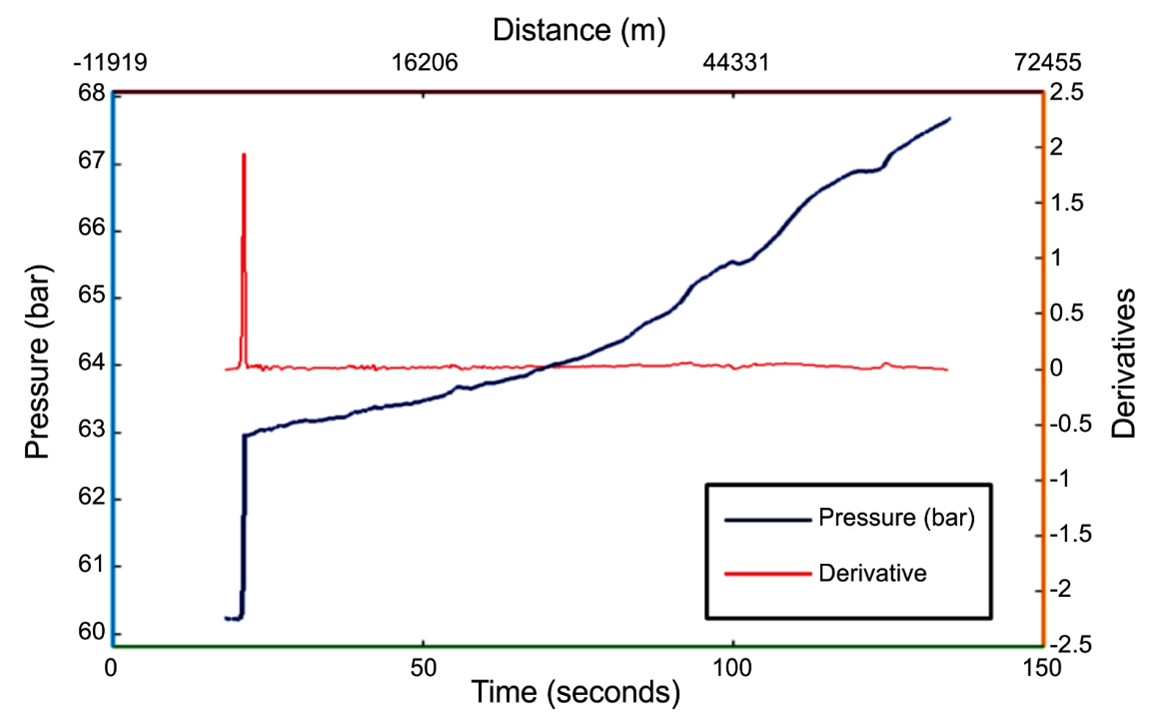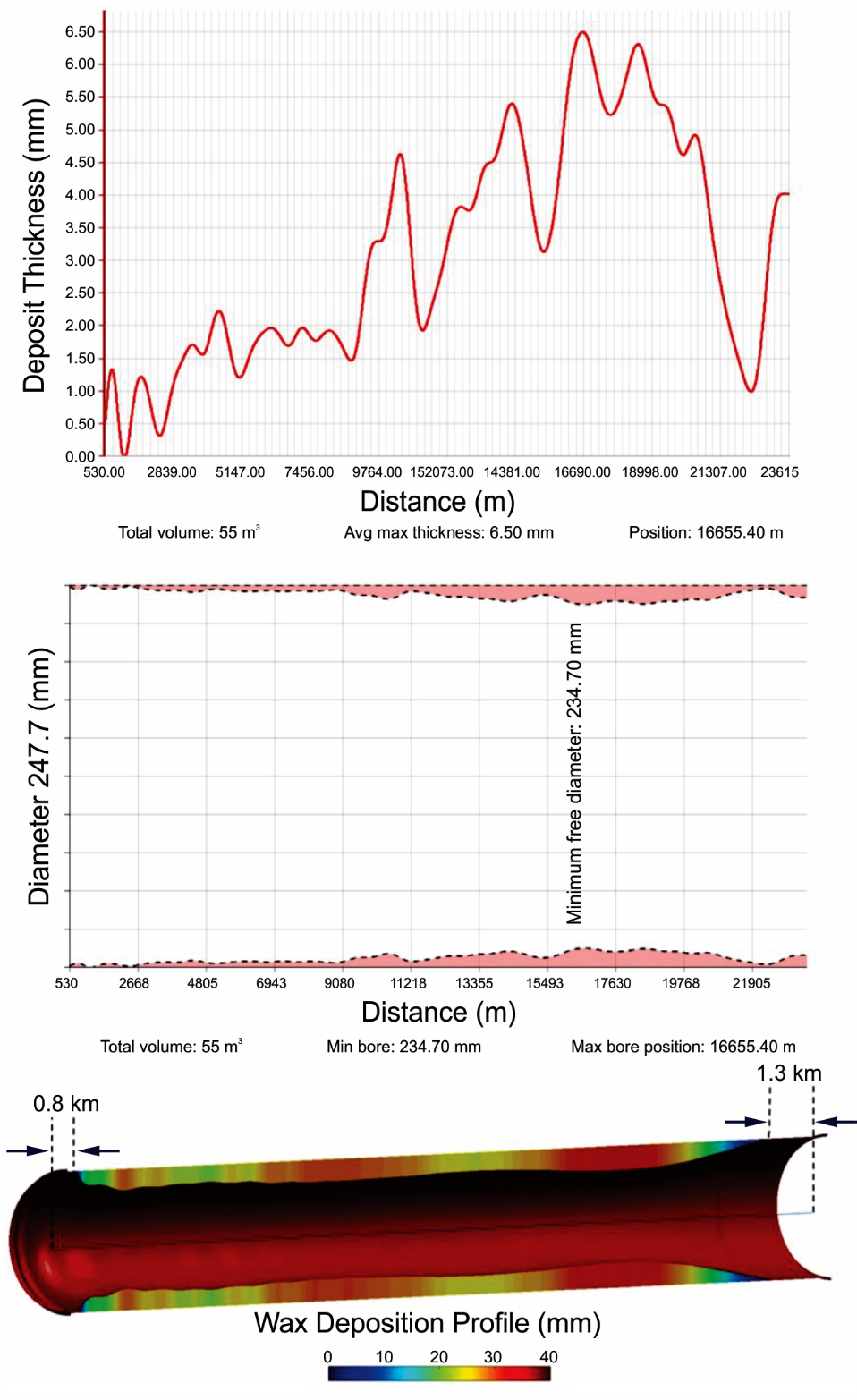August 2021, Vol. 248, No. 8
Features
Halliburton Develops Non Intrusive Pipeline Inspection Method for Unpiggable Lines
Special to P&GJ
Halliburton’s technology team have been developing InnerVue non-intrusive diagnostics technology for a number of years. Advances in computing power and experience gained through numerous data collections in the field have moved the technology to a point where it can now be considered as an alternative to some traditional intrusive inspection techniques. The technology can survey an entire pipeline non intrusively from one end, can cover multiple diameter changes and can survey pipelines with significant restrictions of any type. Only one operator is required to collect required data and all operations can normally be completed within a day.
InnerVue non-intrusive hydrodynamic pressure wave diagnostic technology enables pipeline owners to survey their assets and gain a clear understanding of a pipeline’s deposit profile without a traditional ILI campaign. Non-intrusive pressure wave diagnostics provides visibility of pipeline condition including build-up of deposits and their severity. Knowledge of which provides unprecedented insight into the cleaning and maintenance requirements.
Graham Jack, Senior Product Manager at Halliburton said “Pipeline operators have been very excited at the potential savings they can make by using InnerVue in place of more traditional methods. The low risk surveys give insight never before available without costly and potentially risky intrusive survey methods.”
InnerVue works by recording the signature pressure response of a pipeline when flow is stopped. Data collection is performed by connecting an ultra-high-speed data logger at either the inlet or outlet end of a pipeline in a stable flowing state. The data logger is set to record, flow is stopped, and pressure variations are monitored and recorded to produce a signature response. Figure 1 shows a typical pressure response recorded during a pipeline survey.
Analysis of the pressure response allows a profile of the pipelines internal bore to be determined. The data is analyzed using a specialist software package. The software compares data collected from the field with a simulated theoretical model of the pipeline response. A deposit profile and pipeline internal bore are then extrapolated using numerical iterative algorithms.
During ideal conditions, results are presented with an accuracy of 3mm deposit thickness and 100m deposit position in the pipeline. Total deposit volume for the pipeline is also calculated and results can be displayed in multiple formats—from debris thickness and hydraulic-diameter 2D graphs to 3D renders of the pipeline (Figure 2).
InnerVue offers a significant enhancement to ILI campaign success when pipeline condition is unknown, or pipeline geometry precludes traditional intrusive survey techniques. Results from an InnerVue survey can be used to plan subsequent pigging campaigns for cleaning or maintenance. Where detail more than deposition levels is required and a traditional ILI campaign is proposed, InnerVue can be used to give confidence in pipe cleanliness and that an ILI campaign will be successful by significantly reducing the risk of a stuck pig event.
For operators wishing to reduce lost production InnerVue surveys can be used to better plan maintenance pigging campaigns. By having a thorough understanding of deposition levels prior to cleaning pigging operations, operators can better select the appropriate aggressiveness of the first cleaning pig. Surveys can be performed during pigging to track progress and a post pigging survey can be performed to confirm success of any cleaning campaign. By reducing the duration of a pigging campaign, days of potential lost production can be recovered.
“This is one of the most exciting technologies to hit the pipeline industry for a number of years. The theory has always been understood. But only recently has the computational power become available to perform calculations on this scale. InnerVue analysis allows visualization of a pipeline inner diameter through interpretation of a pressure wave response in a pipeline. In the past intrusive intervention of some sort would be required to get this level of detail” said Stephen Newman, Product Champion at Halliburton.
InnerVue has now been used by operators worldwide with a track record extending to over 10,000km of pipelines surveyed. Previous jobs have included flexible pipelines, rigid lines, gas and oil. Pipelines within complex infrastructure with potentially numerous large scale diameter changes can be surveyed with very low risk. Pipelines which could previously not be surveyed are now fully visualized.







Comments